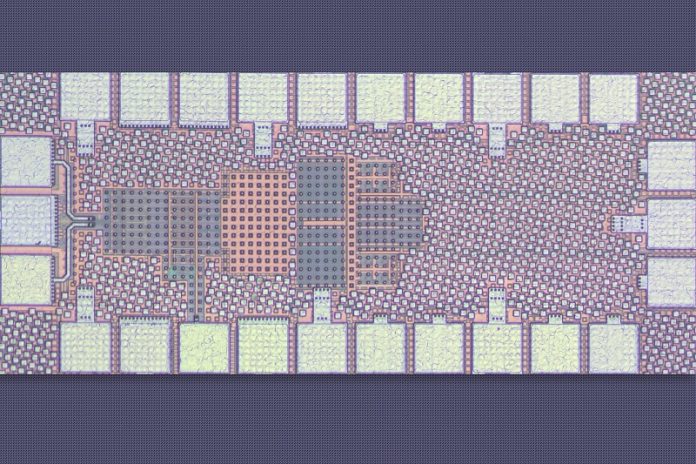
MIT researchers have created a tiny, energy-efficient chip that could make the next generation of smart devices smaller, cheaper, and better at blocking wireless interference.
Designed for 5G-compatible Internet of Things (IoT) gadgets like smart thermostats, health monitors, or factory sensors, this new receiver chip is up to 30 times better at handling signal interference than traditional versions.
What makes this breakthrough exciting is that the chip uses almost no power—less than a milliwatt—and takes up less space than the tip of a pencil.
That’s great news for devices that run continuously on small batteries, especially in environments filled with competing wireless signals, like smart homes, hospitals, or busy factory floors.
At the heart of the design is a clever arrangement of precharged, stacked capacitors—tiny components that store electrical energy—connected by miniature switches.
These switches use far less energy than the ones typically found in IoT devices. Together, they act like a smart filter, removing unwanted signals before they interfere with the receiver’s performance.
Usually, IoT receivers work on fixed frequencies and rely on simple filters to block noise. But the newer 5G networks offer faster speeds and more flexibility.
Devices now need to handle a wide range of frequencies while staying affordable and power-efficient. That’s difficult to achieve with the large, expensive filters that traditional systems require.
To solve this, the MIT team used a technique that places the capacitor network directly inside the receiver’s amplifier circuit. This setup takes advantage of something called the Miller effect, which makes small capacitors behave like much larger ones. As a result, the team was able to shrink the entire receiver circuit down to less than 0.05 square millimeters—without sacrificing performance.
One challenge they faced was keeping the power supply low while still delivering enough voltage to make the switches work reliably. Tiny switches can misfire if the voltage is too low, especially in the presence of interference.
To fix this, the researchers used a technique called bootstrap clocking, which gives the switches just enough extra voltage to function properly—without needing bulky or power-hungry components.
The end result is a chip that not only uses very little power, but also does an excellent job blocking out harmful interference—especially the type known as harmonic noise, which can make receivers act unpredictably. It’s also designed to be “quiet,” meaning it doesn’t accidentally send out extra signals that could clutter the airwaves.
Because it’s simple, compact, and relies on basic components like switches and capacitors, this chip could be easier and cheaper to manufacture. And since it works across a wide range of frequencies, it can be adapted to different types of IoT devices, from medical wearables to smart city sensors.
The researchers are now exploring ways to make the chip even more independent—possibly running without a battery by harvesting energy from existing wireless signals, like Wi-Fi or Bluetooth, in the environment. This could lead to the development of self-powered, always-on devices that help power the smart future.



